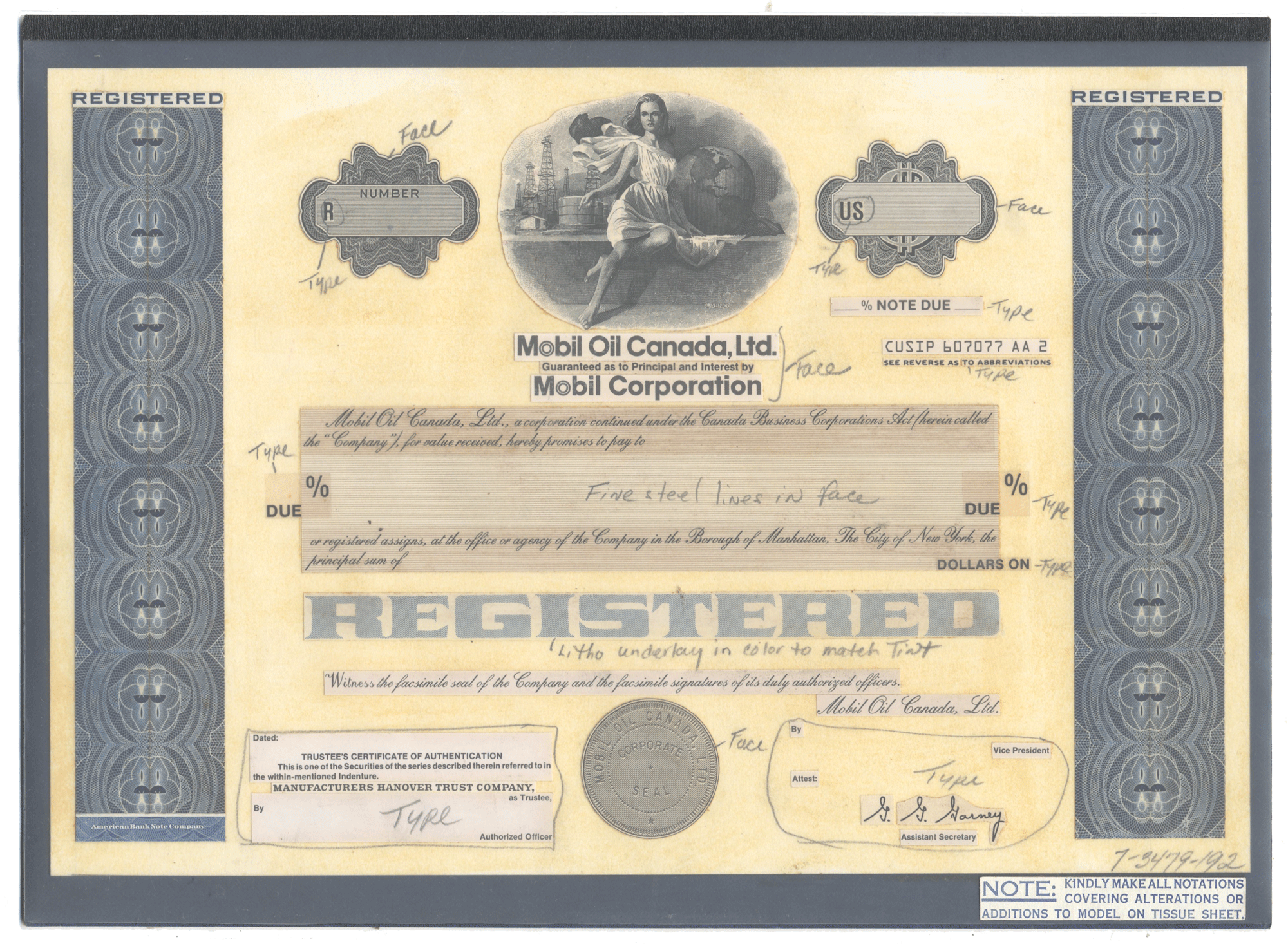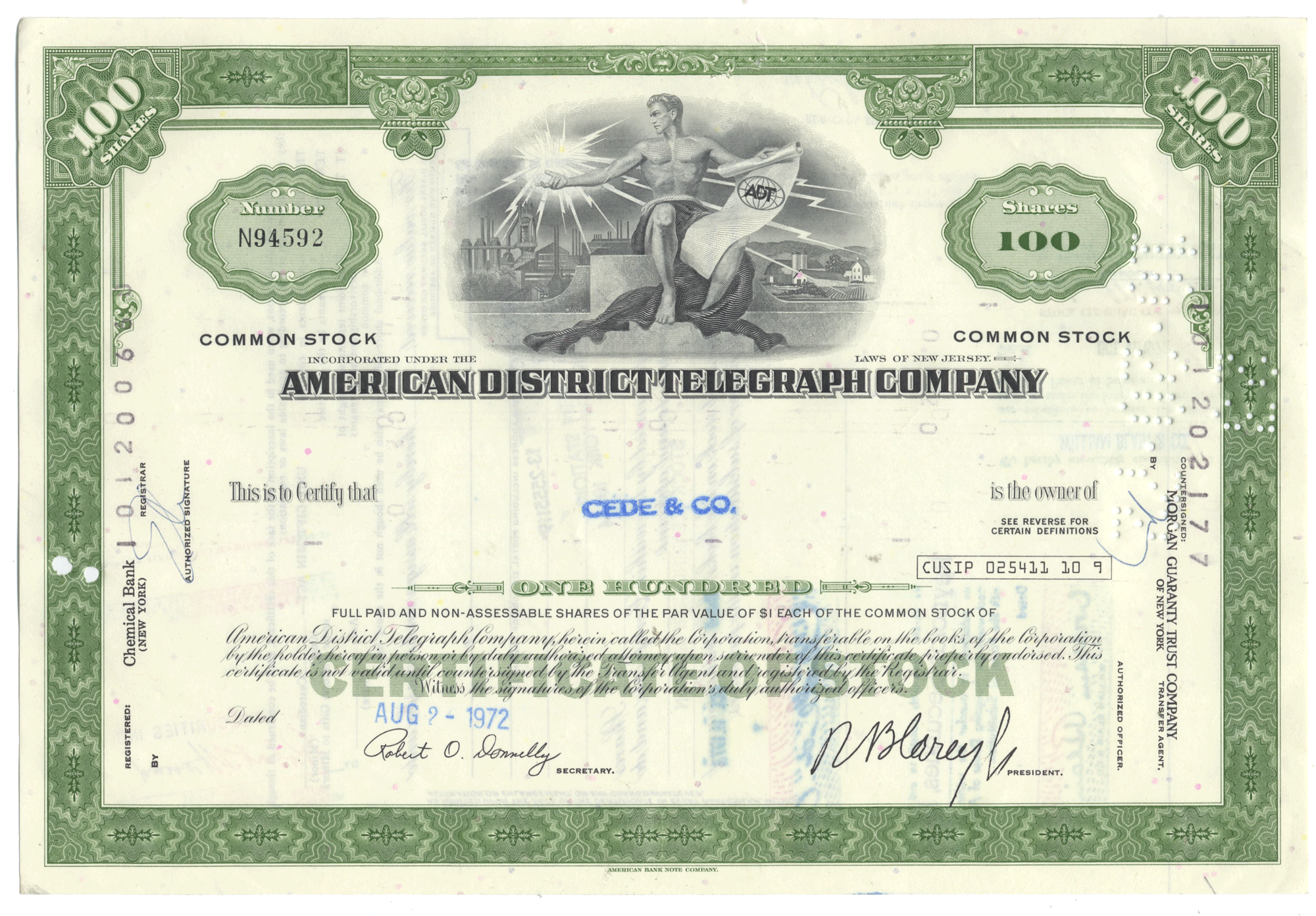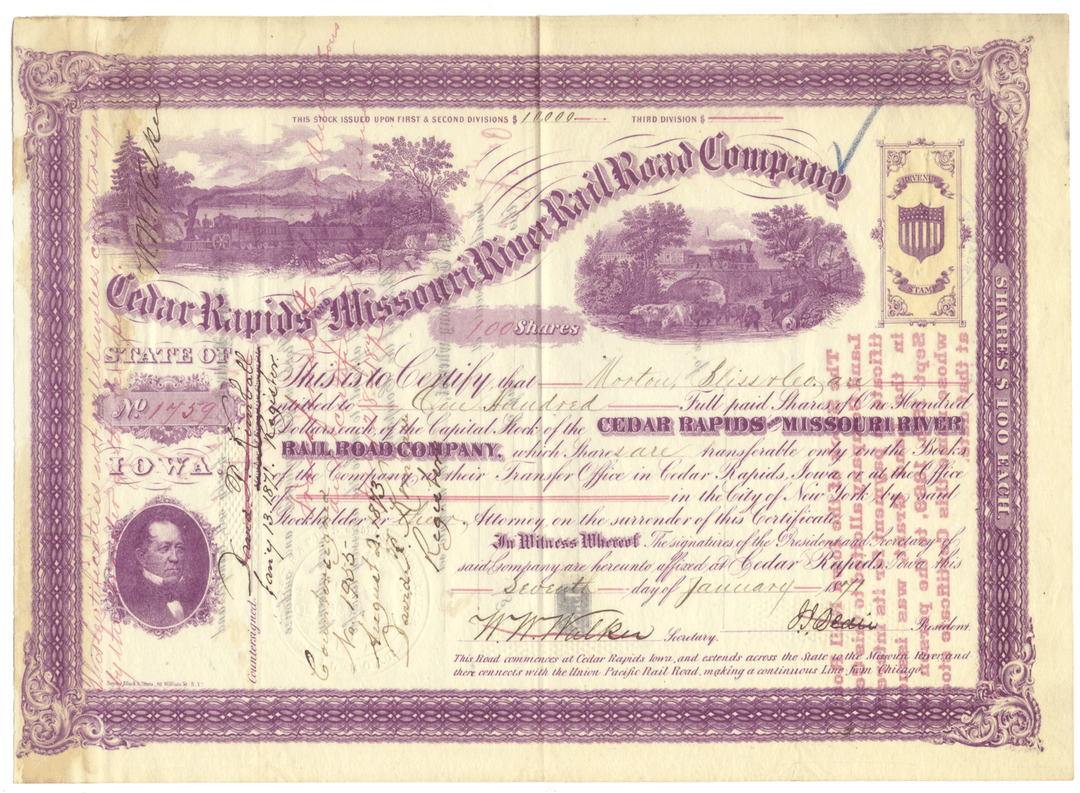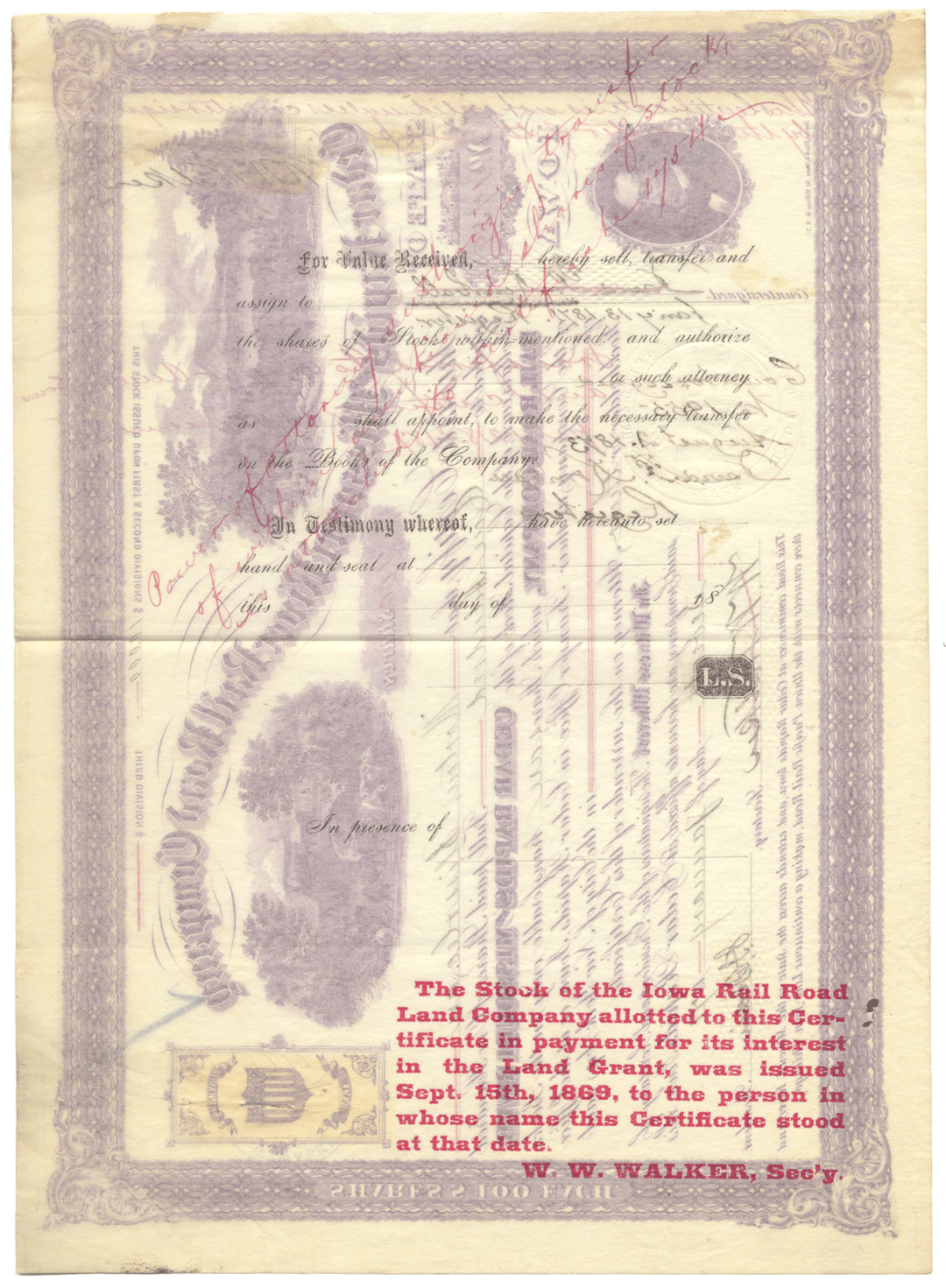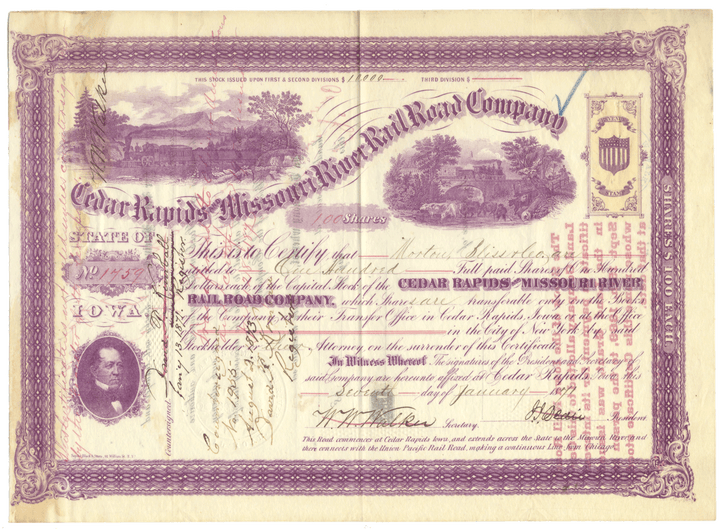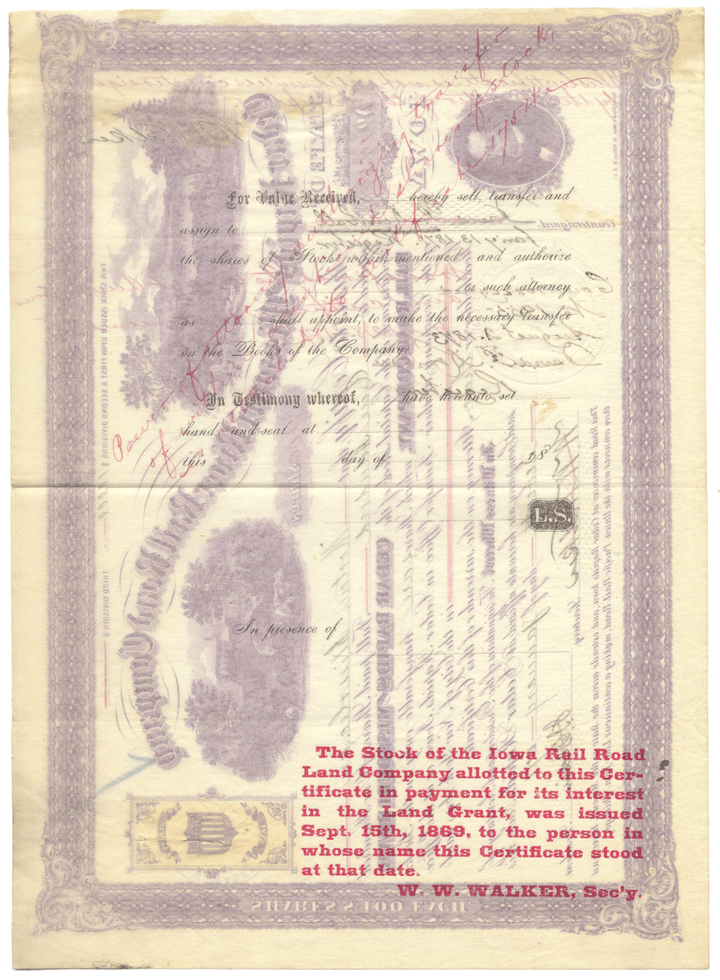Cedar Rapids and Missouri River Rail Road Company (Signed by John Insley Blair)
- Guaranteed authentic document
- Orders over $50 ship FREE to U. S. addresses
Product Details
Company
Cedar Rapids and Missouri River Rail Road Company
Certificate Type
Capital Stock
Date Issued
January 7, 1871
Canceled
Yes
Printer
Snyder, Black & Sturn
Signatures
Hand signed
Approximate Size
12 1/4" (w) by 8 1/2" (h)
Images
Show the exact certificate you will receive
Guaranteed Authentic
Yes
Additional Details
Signed by John Insley Blair
Historical Context
The Cedar Rapids and Missouri River Railroad was a railroad chartered to run from Cedar Rapids, Iowa to Council Bluffs, Iowa on the Missouri River. It was the first railroad to reach Council Bluffs, Iowa, the eastern terminus of the First Transcontinental Railroad. The city of Ames, Iowa was created as a station stop on the line. It was one of four railroads that were built as result of the Iowa Land Bill of 1856 that gave land grants for railroads.
The railroad was organized on January 16, 1860, and composed largely of stockholders in the Chicago, Iowa and Nebraska Railroad Company, already in operation from Clinton to Cedar Rapids.
Union Pacific Railroad baron Thomas Clark Durant was to manipulate CR&M stock to add to his fortune. Durant controlled another of the Iowa land grant railroads, the Mississippi and Missouri Railroad (M&M) and ran up its stock by saying the transcontinental railroad would connect to it. At the same time, he was buying the depressed CR&M stock. Then Durant declared that CR&M would be the railroad of choice for the transcontinental connection. After buying back the newly depressed M&M stock, Durant and his cohorts made about $5 million.
The city of Ames was chartered in 1864 for the railroad and was named by CR&M President John Blair for Massachusetts Congressman Oakes Ames.
In July 1862, the Galena and Chicago Union Railroad leased the line in perpetuity. The Galena line was in turn consolidated with the Chicago and North Western Railway on June 2, 1864, and the line to Council Bluffs was completed in January 1867. The lease was formally turned into a sale in 1884.
John Insley Blair

John Insley Blair was born at Foul Rift in White Township, New Jersey, just south of Belvidere. Blair's parents, John Blair and Rachel Insley, immigrated from Scotland; he was the fourth child of ten children. At the age of two the Blair family moved to a farm near Hope Township, New Jersey.
As a youth, Blair displayed a keen interest in the acquisition of wealth. At the age of ten, he is reported to have told his mother, "I have seven brothers and three sisters. That's enough in the family to be educated. I am going to get rich." The young Blair began earning money by trapping wild rabbits and muskrats and selling their skins at a price of sixteen for a dollar. The next year, Blair began working at a general store owned by his cousin John, and at the age of seventeen he founded a store of his own with his cousin as an equal partner, located in the community of Butt's Bridge, New Jersey.
On August 25, 1825, the name of the community was changed to Gravel Hill and Blair was appointed postmaster, a position he retained until July, 1851. Blair bought out his cousin's share of their store and expanded operations. By 1830, he owned five stores, each one run by one of his brothers.
On January 23, 1839, Gravel Hill was officially renamed Blairstown, New Jersey in Blair's honor. Blair, either outright or jointly with others, owned Lackawanna Coal and Iron Company (1846), Delaware, Lackawanna and Western Railroad (1852), Union Pacific Railroad (1860), and was president, director, or joint in more than 20 others. He established Blair, Nebraska by purchasing a 1,075-acre tract of land in Nebraska on May 10, 1869 after the Sioux City and Pacific Rail Road chose to cross the Missouri river at that location.
Blair managed his multimillion-dollar businesses from rural Blairstown, New Jersey, or from his private rail car upon which it was common for him to log 40,000 miles annually. As president of 16 railroad companies, he amassed a fortune estimated at $70 million. Blair was the largest owner of rail mileage in the world. His religion as a Presbyterian and penchant for philanthropy led him to found more than 100 churches in close proximity to his railroads. In 1873, he was also an investor in the Green Bay and Minnesota Railroad, and the namesake of Blair, Wisconsin.
He founded Blair Academy in 1848, and helped to found Lafayette College (in Easton, Pennsylvania) and Grinnell College (in Grinnell, Iowa.)
Related Collections
Additional Information
Certificates carry no value on any of today's financial indexes and no transfer of ownership is implied. All items offered are collectible in nature only. So, you can frame them, but you can't cash them in!
All of our pieces are original - we do not sell reproductions. If you ever find out that one of our pieces is not authentic, you may return it for a full refund of the purchase price and any associated shipping charges.


